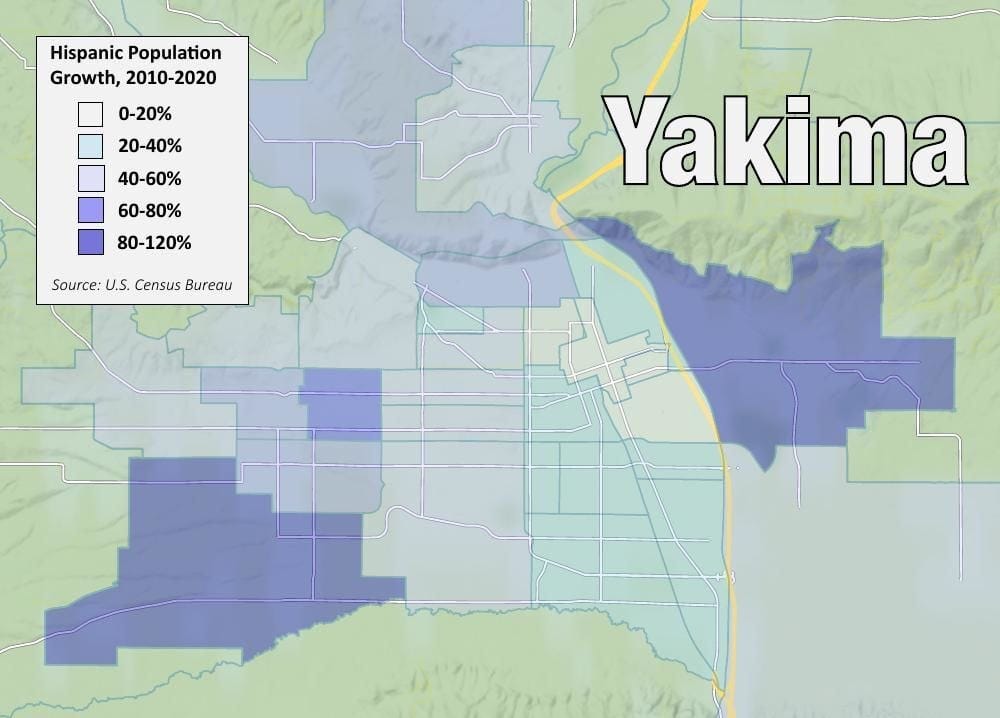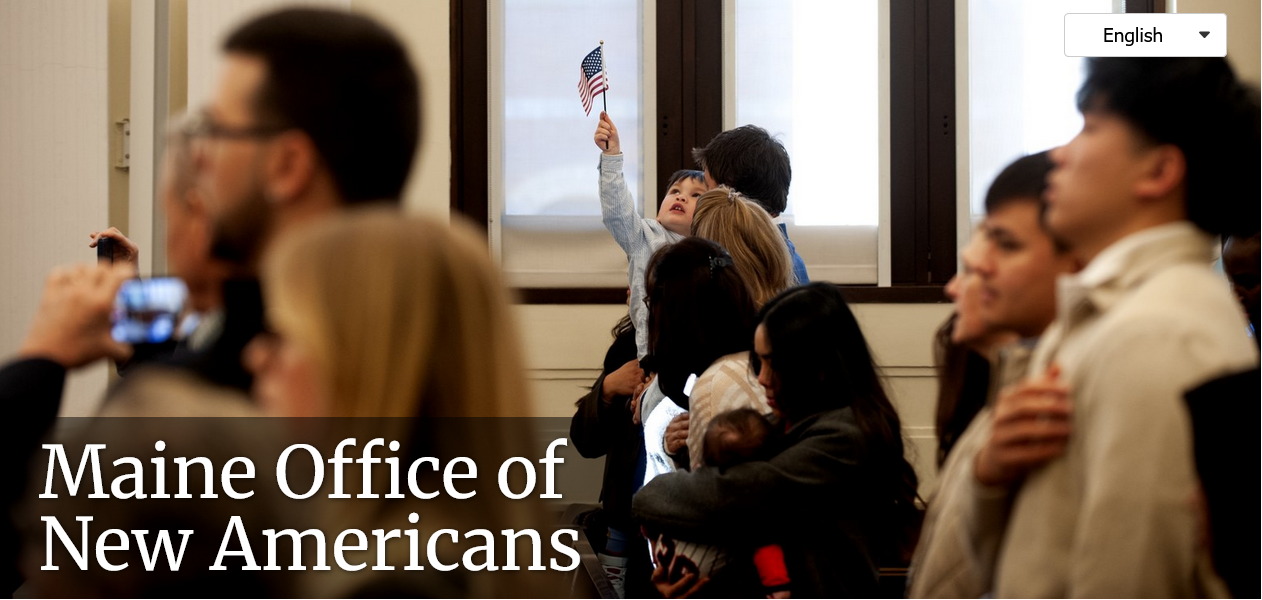By Mike Adams
Washington State, known for its lush forests, vibrant tech hubs, and progressive politics, is undergoing a profound demographic transformation that is leaving one of America’s most unique cultural regions at risk of social and political extinction. The rapid diversification of its population, driven by both legal and illegal immigration, is leading to the crumbling of a once prosperous state. Tax collection is faltering while the state government, the pro-replacement state government, is increasing the tax burden on every day Americans. Large American companies are leaving the state and a staggering 12% of all businesses surveyed in Washington have expressed a desire to relocate to neighboring Idaho or other more affordable (read less diverse) parts of the country.
A state that helped to define the pioneer image and self-made man national character of the American people is at risk if the Great Replacement continues.
Demographic Shifts in Washington
Washington State has experienced a steady decline in its foundational American population (non-Hispanic Whites).. According to U.S. Census Bureau data, in 1970, Washington was approximately 94% White. By 2020, this figure had dropped to 63.8%, with projections estimating a further decline to below 60% by 2040. The state’s Hispanic population has grown significantly, rising from 2.1% in 1970 to 13.2% in 2020, while the Asian population increased from 1.9% to 9.2% over the same period. Additionally, the Black population has grown modestly, from 2.1% to 4.4%, and multiracial or "other" racial categories have expanded due to increased immigration and intermixing.
The growth in Washington’s non-White population is concentrated in urban centers like Seattle, Tacoma, and Spokane, but rural areas are also seeing changes. For example, counties like Yakima and Franklin have seen Hispanic populations rise to over 50% and 54%, respectively, driven largely by agricultural labor migration from Latin America.
This demographic shift is not organic but is accelerated by deliberate policy choices at both the state and federal levels.
A Snapshot on the Decline of American Cities
The West Coast featured some of the Whitest cities in America by the 1960s.
Moreover the foreign-born population of Washington has swelled at such a consistent pace that integration has become nearly impossible and ethnic enclaves and isolated communities have begun to form in certain regions of the state. In 1970, the foreign origin population of the state—those born abroad plus second generation immigrants, was about 18.7% and 88% of those immigrants were from Europe, Canada, or another Western country. As of 2023, Washington’s foreign born population has risen to 15.5% with 88% of those immigrants being of non-Western origin. A further 6% of the state’s population are children under 18 with immigrant parents. Today Washington’s population is 21% of foreign origin and 88% of non-Western extraction. A remarkable increase and demographic reversal on the situation in 1970.
State Policies Facilitating Demographic Change
The state’s government, one that has been subject to Democratic leadership for decades, has implemented policies that actively encourage immigration and demographic ‘diversification’. Governor Jay Inslee and the state legislature have very proudly made Washington into a "sanctuary state," with laws like the 2019 Keep Washington Working Act (SB 5497) prohibiting local law enforcement from cooperating with federal immigration authorities
This has effectively shielded illegal immigrants from deportation and is likely encouraging further immigration into the state. The state has also embraced programs to resettle so-proclaimed and so-called refugees and asylum seekers. Seattle, in particular, has been a hub for refugee resettlement, with organizations like the International Rescue Committee facilitating the arrival of thousands of migrants from Africa, the Middle East, and Southeast Asia. In 2023 alone, Washington accepted over 2,500 refugees, primarily from Somalia, Afghanistan, and Syria, with many being placed in already strained communities like Tukwila and Kent.
These areas have seen rising crime rates and pressure on public services, yet state officials continue to promote further resettlement. Moreover, Washington’s economic policies incentivize immigration. The state’s booming tech industry, led by companies like Microsoft and Amazon, relies heavily on H-1B visa holders, predominantly from India and China. In 2024, Washington employers sponsored over 15,000 H-1B visas, contributing to the growing Asian demographic. While these workers are often portrayed as essential to economic growth we know that they only displace Americans.
The Role of Federal Policies
Prior to the second Trump administration federal policies also play a significant role in Washington’s demographic transformation. The 1965 Immigration and Nationality Act, which abolished national-origin quotas, opened the door to increased immigration from non-Western countries.
Since then, chain migration and lax border enforcement have allowed millions to enter the U.S., with many settling in states like Washington. The Biden administration’s border policies, which critics argue have facilitated an influx of over 7 million illegal immigrants nationwide since 2021, have directly impacted Washington.
The state’s proximity to the Canadian border, coupled with lax enforcement, has made it a destination for migrants crossing from Canada, particularly in Whatcom and Skagit counties. Federal housing policies, such as Section 8 vouchers, have also contributed to demographic shifts. In Washington, 65% of Section 8 recipients are minorities, and the program has enabled low-income migrants to relocate to suburban and rural communities, altering their demographic makeup. Unlike some states, Washington has not implemented widespread restrictions on Section 8 use, allowing federal funds to reshape local communities without local consent.
Impacts on Native Communities
The demographic changes in Washington have profound implications for its native-born population, particularly Foundational (European extracted) Americans, who are increasingly marginalized in a state their ancestors built. In Seattle, once a predominantly White city, the non-Hispanic White population has fallen to 59.1% as of 2020, down from 80.7% in 1980.
This shift has coincided with rising housing costs, driven partly by tech-driven gentrification and competition for resources from new arrivals. Many native-born residents, unable to afford urban centers, have been pushed to the suburbs or out of state entirely, contributing to Washington’s net population loss of 6,700 residents between 2020 and 2023.
Crime has also emerged as a concern. In King County, which includes Seattle, violent crime rose by 20% from 2019 to 2023, with some incidents linked to migrant communities. For example, a 2023 report from the Seattle Police Department noted an uptick in gang-related violence in South Seattle, where migrant populations have grown. While correlation does not equal causation, the strain on law enforcement and social services is undeniable. Culturally, the push for multiculturalism has eroded traditional community cohesion. Small towns like Burlington and Mount Vernon, once predominantly White and working-class, now host large Hispanic and East African populations, leading to tensions over language, schooling, and community identity. The state’s emphasis on "diversity, equity, and inclusion" in public institutions has further alienated native residents, who feel their heritage is being sidelined in favor of newcomer integration.
Elite Agendas and the "Great Replacement"
The "Great Replacement" in Washington is not a conspiracy but a documented outcome of policy choices. In a 2009 speech, then-Senator Maria Cantwell praised Washington’s growing diversity as a "strength" and advocated for increased immigration to bolster the economy. Similarly, Governor Inslee’s 2021 insultingly named "New Americans" initiative aimed to streamline pathways for immigrants to access state services, echoing Maine’s anti-American "Office of New Americans."
These policies reflect an elite consensus that demographic replacement is a desirable goal, often justified under the guise of economic necessity or moral obligation. Nationalists know, though, that this agenda prioritizes corporate interests and globalist ideologies over the well-being of native-born citizens. The tech industry’s reliance on cheap foreign labor, coupled with the state’s sanctuary policies, suggests a deliberate effort to reshape Washington’s demographic and political landscape.
As the White population declines and the goal of governance switches to diversity at all costs the state’s policy priorities have shifted leftward, with Democrats securing a supermajority in the state legislature since 2018. This political realignment ensures that policies favoring immigration and multiculturalism face little opposition.
Policy Alternatives
Despite these trends, resistance is emerging. Grassroots movements in rural counties like Snohomish and Pierce have pushed back against state-mandated housing developments that facilitate migrant resettlement. Local governments have some tools at their disposal to stem demographic change, such as zoning restrictions and ordinances prioritizing local residents for housing subsidies. For example, some Washington towns have explored requiring proof of long-term residency for certain public benefits, though these measures face legal challenges from state authorities.
The White Papers Policy Institute proposes several policy alternatives to protect Washington’s native communities:
Repeal Sanctuary State Policies: Reverse SB 5497 to allow local cooperation with ICE, deterring illegal immigration.
Investigate H-1B Visa Abuse: Large American firms have been fined several times in recent years for preferring foreign H-1B workers over Americans. State authorities must conduct investigations into all major firms to ensure they are hiring Americans first. H-1B visa abusers should be reported to DOJ and DHS for deportation.
Deporting illegals: The Supreme Court has upheld Texas’ right to deport illegal immigrants and turn them back at the border, this also empowers Washington. The State could and should begin a program of deporting illegal aliens and their criminal associates, including American-born family members who consent to depart.
Dealing with legal migration: 51% or 619,000 immigrants in the state of Washington have yet to become naturalized citizens of the United States (I won’t call them Americans). Washington should begin a process of reporting any immigrants utilizing welfare, abusing their visas, or with criminal records to federal authorities. With more than 54% of non-citizens on at least one major welfare program this could rapidly reduce the foreign-origin population of the state.
Conclusion
The Great Replacement in Washington State is a reality, driven by a combination of federal and state policies that prioritize immigration over the interests of native-born citizens. The rapid decline of the White population, coupled with the cultural and economic strain of mass immigration, threatens the state’s cohesion and identity. While elites celebrate diversity as an unqualified good, many Washingtonians feel displaced in their own communities. By adopting nationalist policies that prioritize the interests of existing residents.
Support our mission to take on more writers and contributors:
Zelle: whitepapersinstitute@protonmail.com
Buy us a coffee: https://www.buymeacoffee.com/wppi
Linktree: https://linktr.ee/wppi
Snail Mail: White Papers Policy, PO Box 192, Hancock, MD 21750S









